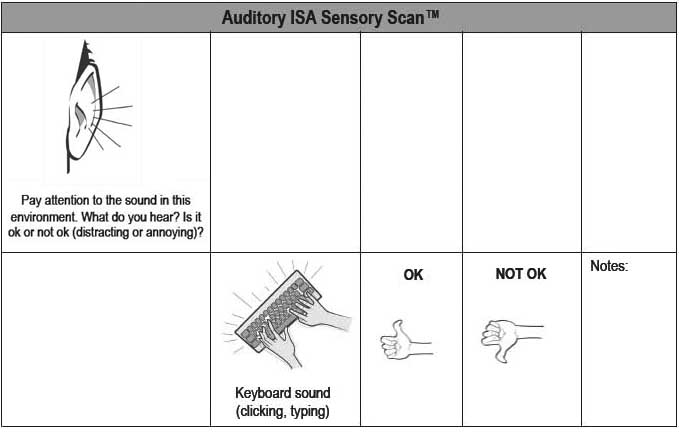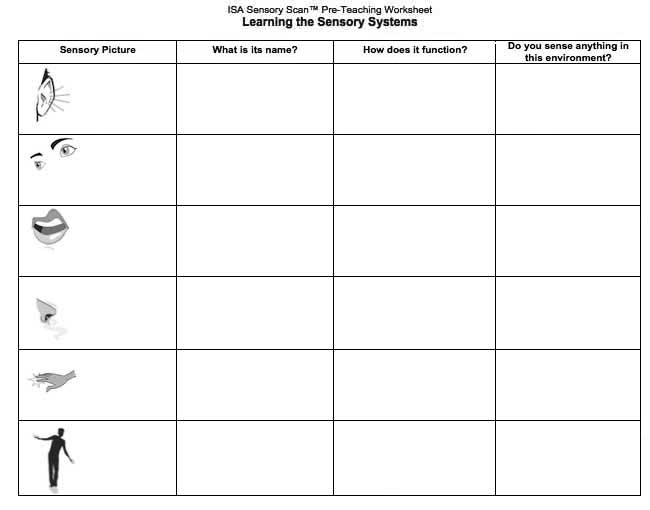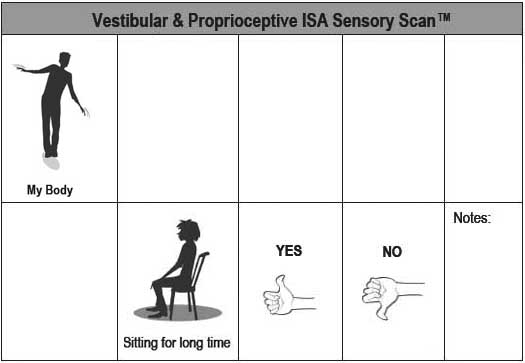Many individuals with autism, like myself, have challenges with the sensory world. Sometimes these challenges are difficult for us to identify, and quite often it’s even harder for those around us to see or understand them. Our senses provide our brains with information about the environment, which in turn helps us respond to the environment and organize our actions and behavior. People with sensory differences don’t adjust easily to some environments, which can make it harder for us to participate as fully as we would like to. For example, we might perceive sounds or smells that don’t seem to bother others. At times, such sensory input can be so challenging that it prevents us from being able to keep up in school lessons, join in activities with our friends or families, or go to community events. Sometimes they can be deal breakers when it comes to keeping a job or performing well at work.

Valerie Paradiz, PhD
The good news is that when people with autism have the opportunity to learn more about their sensory systems, they can anticipate and prepare for difficult situations (by bringing supportive tools such as earplugs or sunglasses to work or other settings) or advocate for an accommodation (such as requesting to turn off the fluorescent lights). I developed the ISA Sensory Scan™ for this purpose. It is a simple tool that helps any person methodically scan an environment to identify what his/her sensory challenges are, and, more importantly, do something about it. The great thing about the Sensory Scan is that you can do it either on your own or with someone to support you. In other instances, the scan can be conducted as an observation by a staff person or educator. This method not only helps the person with autism in understanding his/her sensory differences, but it also sensitizes staff to the individual’s particular sensory needs and preferences in a given setting. See figure 1 for an example of a simple Sensory Scan from the ISA® scan series.

Figure 1
This particular scan is designed for those who learn best with visual and communication supports. The ISA scan series includes a broad range of scan types to support different learning and processing styles for all people on the spectrum and across the life span.
Before a person can begin to scan, it is important to first ensure that the individual knows what the sensory systems are. You’d be surprised how many people on the autism spectrum have never been provided with this information, even though our sensory experiences impact our day-to-day lives in very profound ways. Using a worksheet like the excerpt shown in figure 2 from the ISA Sensory Scan Toolkit can be useful in supporting a person in discovering the sensory systems.

Figure 2
Another method of pre-teaching the sensory systems before scanning is to emphasize more concrete learning activities, such as a cooking project that is used to review and model the different systems and how they function. For example, if we cook pizza together, we can investigate what the nose smells, what the mouth tastes, what the eyes see, and so forth. In addition to the five traditional sensory systems we often think of when asked to identify the senses, there are also two more internal senses: vestibular and proprioceptive. Together these systems involve important aspects of body movement, balance, location in space and more. Though sometimes difficult to define in words, the proprioceptive and vestibular sensory systems are very easy to portray using visual supports, such as the illustration in figure 3 from the Sensory Scan library.

Figure 3
The last step in conducting a Sensory Scan is to take the data that’s collected and use it to develop an Advocacy Plan. The data usually identifies items in an environment that make it uncomfortable or impossible to be in without a modification of some kind. A very good example of this often occurs in schools or in work settings when a teacher or co-worker regularly wears perfume. Developing an Advocacy Plan to address the situation can be life changing to someone on the spectrum who might be attempting to endure significant discomfort, pain, nausea or distraction due this input. This Advocacy Plan might involve creating a diplomatic script (that can be rehearsed and role-played in advance), so that the individual with sensory challenges can help the person wearing perfume understand the medical/sensory concerns involved, including a polite request that the person not wear perfume to school or work.
The ISA Sensory Scan™ is an evidence-based tool that has been used in schools, colleges, summer camps, residential settings, fitness programs and other locations in the US and abroad to support people with autism. To learn more about the ISA curriculum, visit www.autismselfadvocacy.com.
This article was originally printed in the AHA Association’s Fall 2012 issue of On The Spectrum and has been reprinted with permission. For more information, please visit www.ahany.org.




